The Chicago Imagists are a group of representational artists associated with the School of the Art Institute of Chicago who exhibited at the Hyde Park Art Center in the late 1960s.
Visual arts of Chicago refers to paintings, prints, illustrations, textile art, sculpture, ceramics and other visual artworks produced in Chicago or by people with a connection to Chicago. Since World War II, Chicago visual art has had a strong individualistic streak, little influenced by outside fashions. "One of the unique characteristics of Chicago," said Pennsylvania Academy of Fine Arts curator Bob Cozzolino, "is there's always been a very pronounced effort to not be derivative, to not follow the status quo." The Chicago art world has been described as having "a stubborn sense ... of tolerant pluralism." However, Chicago's art scene is "critically neglected." Critic Andrew Patner has said, "Chicago's commitment to figurative painting, dating back to the post-War period, has often put it at odds with New York critics and dealers." It is argued that Chicago art is rarely found in Chicago museums; some of the most remarkable Chicago artworks are found in other cities.

Phyllis Bramson is an American artist, based in Chicago and known for "richly ornamental, excessive and decadent" paintings described as walking a tightrope between "edginess and eroticism." She combines eclectic influences, such as kitsch culture, Rococo art and Orientalism, in juxtapositions of fantastical figures, decorative patterns and objects, and pastoral landscapes that affirm the pleasures and follies of romantic desire, imagination and looking. Bramson shares tendencies with the Chicago Imagists and broader Chicago tradition of surreal representation in her use of expressionist figuration, vernacular culture, bright color, and sexual imagery. Curator Lynne Warren wrote of her 30-year retrospective at the Chicago Cultural Center, "Bramson passionately paints from her center, so uniquely shaped in her formative years […] her lovely colors, fluttery, vignette compositions, and flowery and cartoony imagery create works that are really like no one else's. Writer Miranda McClintic said that Bramson's works "incorporate the passionate complexity of eastern mythology, the sexual innuendos of soap operas and sometimes the happy endings of cartoons." Bramson's work has been exhibited in exhibitions and surveys at the Museum of Contemporary Art, Chicago (MCA), the Art Institute of Chicago, the Smithsonian Institution, and Corcoran Gallery of Art. In more than forty one-person exhibitions, she has shown at the New Museum, Fort Wayne Museum of Art, Boulder Art Museum, University of West Virginia Museum, and numerous galleries. She has been widely reviewed and recognized with John S. Guggenheim and Rockefeller foundation grants and the Anonymous Was A Woman Award, among others. She was one of the founding members of the early women's art collaborative Artemisia Gallery and a long-time professor at the School of Art and Design at the University of Illinois at Chicago, until retiring in 2007.
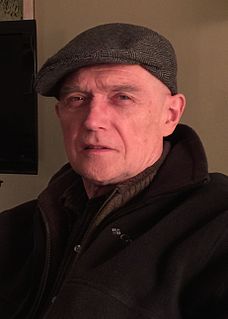
Richard Wetzel is an American artist. He is best known for his oil paintings but also has exhibited collages and sculpture. In 1969 and 1970, Wetzel exhibited with the Chicago Imagists, a grouping of Chicago artists who were ascendant in the late 1960s and early 1970s.
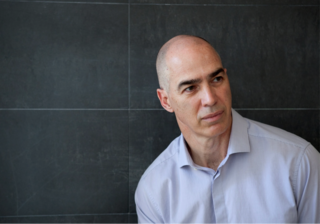
David Klamen is an American artist and academic. He is known for visually diverse paintings that meld technical mastery with postmodern explorations of the processes by which humans understand and interpret experience. Klamen has exhibited across the United States, Europe and Asia, including individual shows at the Museum of Contemporary Art Chicago (MCA), the Chazen Museum of Art and the Cedar Rapids Museum of Art, and major group exhibitions at the Metropolitan Museum of Art, the Art Institute of Chicago, the Museum of Contemporary Art, San Diego, the Indianapolis Museum of Art, and the Crocker Art Museum. His work sits in the permanent collections of the Metropolitan Museum of Art, the Los Angeles Museum of Contemporary Art and the Whitney Museum of American Art, among others. Klamen has been based in Chicago for most of his career, which includes being an educator for over thirty years, primarily at Indiana University Northwest, where he was appointed Founding Dean, School of the Arts in 2018.
Julia Fish is an American artist whose paintings have a deceptive simplicity. She paints in oil on stretched rectangular canvases of varying size. By means of close observation of everyday subjects—leaves of a tree seen through a window, a section of floor tiles, an old fashioned light fixture— she makes, as one critic says, "quiet, abstract manifestations of observed realities." She is a studio artist who paints not what she sees in an instant but rather what she observes continuously, day after day. The result, she says, is not so much temporal as durational. Her paintings compress many instances of observation so as to become, as she sees it, "a parallel system to a lived experience." The paintings lack spatial orientation and, as a critic says, can "be described as both highly realistic and abstract without compromising either term." In 2008, Alan G. Artner, writing in the Chicago Tribune, said "This is work of small refinements and adjustments. The world of everyday things generates it, but Fish's qualities of seeing and touch elevate the things to a plane on which they leave behind their humble character."

Corey Postiglione is an American artist, art critic and educator. He is a member of the American Abstract Artists in New York, and known for precise, often minimalist work that "both spans and explores the collective passage from modernism to postmodernism" in contemporary art practice and theory. New Art Examiner co-founder Jane Allen, writing in 1976, described him as "an important influence on the development of contemporary Chicago abstraction." In 2008, Chicago Tribuneart critic Alan G. Artner wrote "Postiglione has created a strong, consistent body of work that developed in cycles, now edging closer to representation, now moving further away, but remaining rigorous in approach to form as well as seductive in markmaking and color."

Don Baum (1922–2008) was an American curator, artist and educator, most known as a key impresario and promoter of the Chicago Imagists, a group of artists that had an enduring impact on American art in the later twentieth century. Described by the Museum of Contemporary Art, Chicago (MCA) as "an indispensable curator of the Chicago school," Baum was known for lively and irreverent exhibitions that offered fresh perspectives combining elements of Surrealism and Pop and that broke down barriers between schooled and untrained, or so-called outsider artists. From 1956 to 1972, Baum was exhibitions director at Chicago's Hyde Park Art Center. It was there, in the 1960s, that he became involved with a group of young artists he exhibited as "Hairy Who" that later expanded to become the Chicago Imagists. That group included Ed Paschke, Jim Nutt, Roger Brown, Gladys Nilsson, and Karl Wirsum. Baum mounted two major shows at the MCA that featured the emerging artists in their first museum exhibitions: "Don Baum Sez: 'Chicago Needs Famous Artists'" (1969) and "Made in Chicago" (1973), which shaped a vision of Chicago's art world as a place of meticulous craftsmanship and vernacular inspiration.

Arthur Lerner is an American artist, known for his atmospheric figurative paintings and drawings, landscapes, and still lifes. He is sometimes described as a realist, but most critics observe that his work is more subjective than descriptive or literal. Associated with Chicago's influential "Monster Roster" artists early in his career, he shared their enthusiasm for expressive figuration, fantasy and mythology, and their existential outlook, but diverged increasingly in his classical formal concerns and more detached temperament. Critics frequently note in Lerner's art a sense of light that evokes Impressionism, delicate color and modelling that "flirts with dematerialization," and the draftsmanship that serves as a foundation for all of his work. The Chicago Tribune's Alan Artner lamented Lerner's comparative lack of recognition in relation to the Chicago Imagists as the fate of "an aesthete in a town dominated by tenpenny fantasts." Lerner's work has been extensively covered in publications, featured in books such as Monster Roster: Existential Art in Postwar Chicago, and acquired by public and private collections, including those of the Smithsonian Institution, Art Institute of Chicago, Smart Museum of Art, and Mary and Leigh Block Museum of Art, among many.
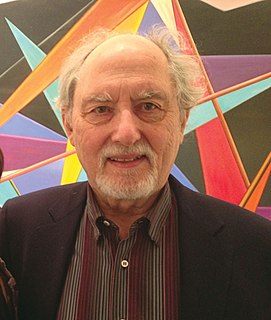
William Conger is a Chicago-based, American painter and educator, known for a dynamic, subjective style of abstraction descended from Kandinsky, which consciously employs illogical, illusionistic space and light and ambiguous forms that evoke metaphorical associations. He is a member of the "Allusive Abstractionists," an informal group of Chicago painters self-named in 1981, whose paradoxical styles countered the reductive minimalism that dominated post-1960s art. In 1982, critic Mary Mathews Gedo hailed them as "prescient prophets of the new style of abstraction" that flowered in the 1980s. In his essay for Conger's fifty-year career retrospective, Donald Kuspit called Conger art-historically daring for forging a path of subjective abstraction after minimalism had allegedly purged painting of an inner life. Despite being abstract, his work has a strong connection to Chicago's urban, lakeside geography and displays idiosyncratic variations of tendencies identified with Chicago Imagist art. A hallmark of Conger's career has been his enduring capacity for improvisation and discovery within self-prescribed stylistic limits.
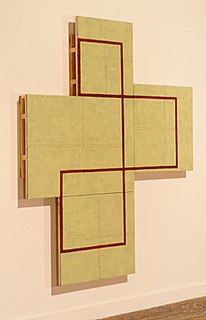
Rodney Carswell is an American abstract artist. He first gained recognition for human-scaled, geometric paintings that feature exposed, projected support structures, creating interplay between sculptural presence and richly painted pictorial surfaces. His recent paintings eschew the superstructures and evoke a greater sense of immediacy, playfulness, and narrative. Critics often describe Carswell's work as uncanny, elusive or quirky, for its tendency to negotiate "in-between" spaces and embrace contradictions such as order and instability, intention and accident, or back and front. Employing irregularly shaped canvasses, thick supports, and openings or holes that reveal the stretcher construction and walls behind them, works like 3 (1994) often occupy a place between painting and sculpture. In a similar way, Carswell uses the modernist languages of Minimalism, Suprematism and Constructivism, yet eludes those categories with postmodern allusions to architecture, the body and spiritual iconography, and with his process-oriented, "hand-made" surfaces. In his essay for Carswell's mid-career retrospective at Chicago's Renaissance Society, Los Angeles Times critic David Pagel suggested that his understated paintings worked their way into the one's consciousness in a "supple, somewhat unsettling manner" that achieves a subtle, but lingering shift in perception.
Jan Cicero Gallery was a contemporary art gallery founded and directed by Jan Cicero, which operated from 1974 to 2003, with locations in Evanston and Chicago, Illinois and Telluride, Colorado. The gallery was noted for its early, exclusive focus on Chicago abstract artists at a time when they were largely neglected, its role in introducing Native American artists to mainstream art venues beyond the Southwest, and its showcasing of late-career and young women artists. The gallery focused on painting, and to a lesser degree, works on paper, often running counter to the city's prevailing art currents. It was also notable as a pioneer of two burgeoning Chicago gallery districts, the West Hubbard Street alternative corridor of the 1970s, and the River North district in the 1980s.

Seymour Rosofsky was an American artist, who has been described as one of the key figures in twentieth-century Chicago art. He emerged in the late 1940s at the School of the Art Institute of Chicago, one of several G.I. Bill veterans, including Leon Golub, Cosmo Campoli and H. C. Westermann, who would join Don Baum, Dominick Di Meo, June Leaf, and Nancy Spero to form the influential movement later dubbed the "Monster Roster" by critic Franz Schulze, which was a precursor to the more well-known Chicago Imagists. Like others in the group, Rosofsky was drawn to the unsettling, macabre side of Surrealism, initially creating gestural, expressionist renderings of grotesque, existentially angst-ridden figures in isolated or uncomfortable situations, that gave way in the 1960s to more fantastical, observational paintings that examined power, politics and domestic relationships in an unflinching way.
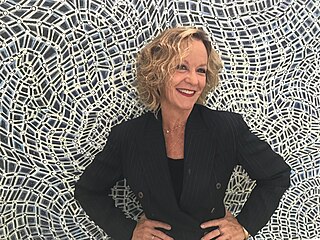
Susan Sensemann is an American artist, educator and arts administrator, most known for her detailed, largely abstract patterned paintings and photomontages reflecting gothic, baroque, spiritual and feminist sensibilities. She has exhibited her work at venues including the Art Institute of Chicago, A.I.R., The Living Art Museum (Reykjavík), Indianapolis Art Center, Chicago Cultural Center, and Art Institute of Boston, on four continents. Her work has been widely reviewed and resides in numerous private, university and corporate collections. Sensemann is known as a versatile and prolific creator, whose ideas have led her to explore diverse painting materials, media, subject matter, and styles from abstraction to realism. Critics note her work's densely packed compositions, shallow fields of oscillating space, complex tactile surfaces, and sensuous color and linearity. James Yood wrote that Sensemann's abstract paintings were "fraught with meaning, charged with value, and seething with import" in their spiritual seeking. Art historian Leisa Rundquist described her photomontage self-portraits as "strangely sensual, yet disturbing" images drawn from "the depths of the unconscious."

Paul Christopher Lamantia is an American visual artist, known for paintings and drawings that explore dark psychosexual imagery. He studied at the School of the Art Institute of Chicago and emerged in the 1960s and 1970s as part of the larger group of artists known as the Chicago Imagists.

Helen O'Toole is an Irish-born painter based in the United States, who is known for abstract paintings suggestive of landscape. She has exhibited throughout Ireland and the United States, in Singapore, and at venues including the San Francisco Museum of Modern Art, Portland Art Museum, Chicago Cultural Center, Tacoma Art Museum, and Institute of Contemporary Arts Singapore. Her work has been featured in the journals Artforum, Arts Magazine, New Art Examiner, and Zyzzyva, as well as the Chicago Tribune,The Irish Times, Seattle Post-Intelligencer, and National Public Radio. Art writers frequently discuss the interplay in her work between abstraction, the evocation of otherworldly light, land and space, and a commitment to investigating meaning through a painting process akin to the processes of cultivation and excavation. Artforum critic James Yood wrote, "echoing the often inchoate quality of nature, her paint surges toward mystery and hints at a kind of chiaroscuro of the spirit"; curator Bonnie Laing-Malcomson suggests her "richly colored monumental paintings evoke the moody landscape of her rural Irish homeland, summoning the force of J. M. W. Turner and Mark Rothko." She has been recognized with a Guggenheim Fellowship in Fine Arts, a Contemporary Northwest Art Award, and a Pollock-Krasner Foundation Award (2013), among other awards. O'Toole lives in Seattle, Washington and is Professor of Art and Chair of the Painting and Drawing Program at the University of Washington.

Frank Piatek is an American artist, known for abstract, illusionistic paintings of tubular forms and three-dimensional works exploring spirituality, cultural memory and the creative process. Piatek emerged in the mid-1960s, among a group of Chicago artists exploring various types of organic abstraction that shared qualities with the Chicago Imagists; his work, however relies more on suggestion than expressionistic representation. In Art in Chicago 1945-1995, the Museum of Contemporary Art, Chicago (MCA) described Piatek as playing “a crucial role in the development and refinement of abstract painting in Chicago" with carefully rendered, biomorphic compositions that illustrate the dialectical relationship between Chicago's idiosyncratic abstract and figurative styles. Piatek's work has been exhibited at institutions including the Whitney Museum, Art Institute of Chicago, MCA Chicago, National Museum, Szczecin in Poland, and Terra Museum of American Art; it belongs to the public art collections of the Art Institute of Chicago and MCA Chicago, among others. Curator Lynne Warren describes Piatek as "the quintessential Chicago artist—a highly individualistic, introspective outsider" who has developed a "unique and deeply felt world view from an artistically isolated vantage point." Piatek lives and works in Chicago with his wife, painter and SAIC professor Judith Geichman, and has taught at the School of the Art Institute of Chicago since 1974.
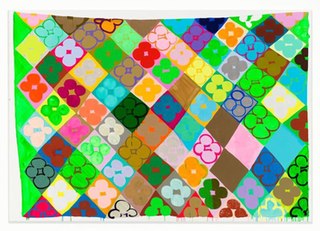
Judy Ledgerwood is an American abstract painter and educator, who has been based in Chicago. Her work confronts fundamental, historical and contemporary issues in abstract painting within a largely high-modernist vocabulary that she often complicates and subverts. Ledgerwood stages traditionally feminine-coded elements—cosmetic and décor-related colors, references to ornamental and craft traditions—on a scale associated with so-called "heroic" abstraction; critics suggest her work enacts an upending or "domestication" of modernist male authority that opens the tradition to allusions to female sexuality, design, glamour and pop culture. Critic John Yau writes, "In Ledgerwood’s paintings the viewer encounters elements of humor, instances of surprise, celebrations of female sexuality, forms of vulgar tactility, and intense and unpredictable combinations of color. There is nothing formulaic about her approach." Ledgerwood has exhibited widely at galleries throughout the United States and in Europe and at institutions including the Art Institute of Chicago, Museum of Contemporary Art Chicago, Smart Museum of Art, and Renaissance Society. Her work belongs to the public art collections of the Metropolitan Museum of Art, Museum of Contemporary Art, Los Angeles, Art Institute of Chicago, and Museum of Contemporary Art Chicago, among others; a monograph, Judy Ledgerwood, was published in 2009 by Hatje Cantz. Ledgerwood lives and works in the Chicago area with her husband, artist Tony Tasset, and teaches at Northwestern University.

Sue Hettmansperger is an American artist known for paintings and collages that work across the spectrum of modernist abstraction and representational imagery. Her work explores the interconnectedness of human, botanical and inorganic systems, scientific concepts and ecological concerns. She has been awarded Guggenheim and National Endowment for the Arts fellowships and her work belongs to the public collections of the Metropolitan Museum of Art, Art Institute of Chicago and Des Moines Art Center, among other institutions. She lives and works in Iowa City and is Professor Emerita of Art at the University of Iowa.
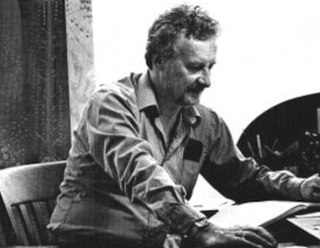
Richard Loving (1924–2021) was an American artist and educator, primarily based in Chicago, Illinois. He gained recognition in the 1980s as a member of the "Allusive Abstractionists," an informal group of Chicago painters, whose individual forms of organic abstraction embraced evocative imagery and metaphor, counter to the dominant minimalist mode. He is most known for paintings that critics describe as metaphysical and visionary, which move fluidly between abstraction and representation, personalized symbolism taking organic and geometric forms, and chaos and order. They are often characterized by bright patterns of dotted lines and dashes, enigmatic spatial fields, and an illuminated quality. In 2010, critic James Yood wrote that Loving's work "mull[ed] over the possibilities of pattern and representation, of narrative and allegory" to attain a kind of wisdom, transcendence and acknowledgement of universals, "seeking understanding of self within the poetics of the physical world."



















